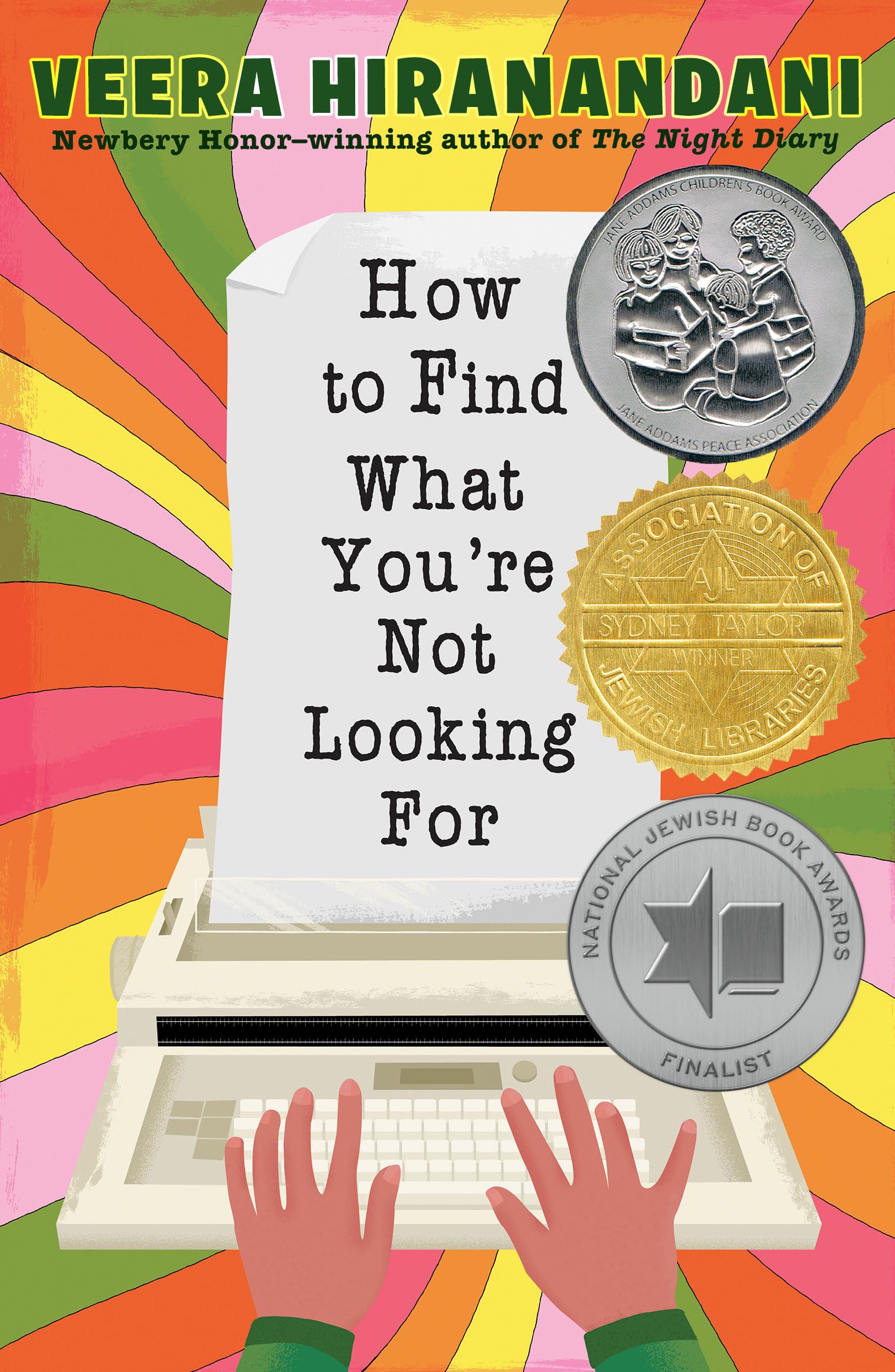How do you find your sister when your parents won’t even say her name?
Veera Hiranandani’s “How to Find What You’re Not Looking For” is a heartfelt middle-grade historical novel set in 1967, following twelve-year-old Ariel Goldberg as she navigates family turmoil, identity, and societal change. Ariel’s world unravels when her older sister, Leah, elopes with Raj, a Hindu man from India, shortly after the Supreme Court’s Loving v. Virginia decision legalizes interracial marriage. Their parents’ rejection of the marriage leaves Ariel isolated, grappling with her sister’s absence, her Jewish family’s financial struggles, and antisemitic bullying at school. Complicating matters, Ariel faces undiagnosed dysgraphia, a learning disability that makes writing a daily challenge. Through poetic self-expression and the guidance of a supportive teacher, she begins to find her voice. Written in a rare second-person perspective, the novel immerses readers in Ariel’s emotional journey, blending personal growth with historical context.
This novel is a powerful tool for exploring SDG 10: Reduced Inequalities, as it tackles interracial marriage bans, antisemitism, and ableism through Ariel’s layered experiences. Ariel’s Principled questioning of her family’s prejudices and her Open-minded evolution as she confronts societal norms demonstrate authentic portrayal B learner profile. Educators can use the book to spark discussions on historical discrimination, empathy, and allyship, for example, by comparing the Goldbergs’ journey to modern-day conversations about inclusion or by analyzing how poetry helps Ariel articulate her struggles.
Consider pairing readings with activities like writing letters from Ariel’s perspective to her sister. The book’s accessible prose and relatable protagonist make it ideal for grades 5–8, though teachers should prepare to address sensitive topics like bullying and family conflict. By highlighting Ariel’s resilience and creativity, Hiranandani invites students to reflect on their own roles in building equitable communities, turning empathy into actionable kindness.

